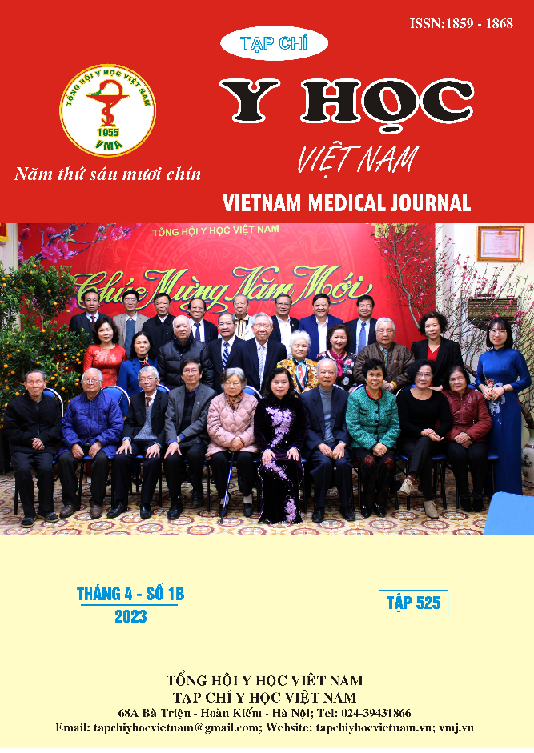ĐÁNH GIÁ HIỆU QUẢ CAN THIỆP PHỤC HỒI CHỨC NĂNG TỚI CHẤT LƯỢNG CUỘC SỐNG CỦA NGƯỜI BỆNH ĐỘT QUỴ NHỒI MÁU NÃO
Nội dung chính của bài viết
Tóm tắt
Mục tiêu: Đánh giá hiệu quả can thiệp phục hồi chức năng tới chất lượng cuộc sống (CLCS) của người bệnh đột quỵ nhồi máu não. Đối tượng và phương pháp nghiên cứu: Nghiên cứu can thiệp, đánh giá so sánh trước và sau điều trị. 92 bệnh nhân đột quỵ nhồi máu não điều trị nội trú tại Bệnh viện Phục hồi chức năng Hà Nội được can thiệp chương trình phục hồi chức năng vận động trị liệu, hoạt động trị liệu, ngôn ngữ trị liệu, dinh dưỡng, điều dưỡng theo liệu trình 02 buổi/ngày x 5 ngày/tuần trong 01 tháng. Bệnh nhân được đánh giá CLCS bằng thang điểm CLCS cho người bệnh đột quỵ não (Stroke Specific Quality of Life/SS-QOL) và thang điểm lượng giá CLCS theo tiêu chuẩn châu Âu (Euro Qol-5D / EQ-5D). Kết quả: Sau 4 tuần điều trị, mức độ CLCS theo thang SSQOL, điểm trung bình CLCS, điểm trung bình CLCS theo từng lĩnh vực sức khỏe chức năng, sức khỏe thể chất, tâm lý, xã hội ở thời điểm sau điều trị 4 tuần đều cao hơn lúc vào viện có ý nghĩa thống kê với p < 0,05. Điểm trung bình CLCS bệnh nhân theo thang điểm EQ-5D cao hơn lúc vào viện có ý nghĩa thống kê với p < 0,001. Có 56,5% (52 bệnh nhân) có điểm CLCS cải thiện, 43,5% (40 bệnh nhân) điểm CLCS chưa có sự cải thiện. Kết luận: Sau 4 tuần can thiệp phục hồi chức năng toàn diện, giúp nâng cao CLCS của người bệnh sau đột quỵ nhồi máu não.
Chi tiết bài viết
Từ khóa
Đột quỵ nhồi máu não, phục hồi chức năng, chất lượng cuộc sống.
Tài liệu tham khảo
2. Hartley T, Burger M, Inglis - Jassiem G(2022). Post stroke health-related quality of life, stroke severity and function: A longitudinal cohort study. Afr J Disabil;11:947. doi: 10.4102/ajod.v11i0.947.
3. Ishikawa S, Kayaba K, Gotoh T, et al (2008).Incidence of total stroke, stroke subtypes, and myocardial infarction in the Japanese population: the JMS Cohort Study. J Epidemiol.8;18(4):144-50. doi: 10.2188/jea.je2007438. . 2008.
4. In TS, Jung JH, Jung KS, Cho HY (2021). Effect of Sit-to-Stand Training Combined with Taping on Spasticity, Strength, Gait Speed and Quality of Life in Patients with Stroke: A Randomized Controlled Trial. Life (Basel)11(6):511. doi: 10.3390/life110.
5. Markus H (2012). ‘Stroke: Causes and clinical features’, Medicine 40(9), 484-489. 10.1016/j.mpmed.2012.06.005.
6. WHO (2020). Disease burden and mortality estimate. WHO. Accessed. November 9, 2020. http://who.int/healthinfo/global_burden_disease/estimates/en/.
7. World Stroke Organization (2015). World Stroke Campaign, http://www.world-stroke.org/advocacy/world-stroke-campaign> [Accessed 16 October 2016]


